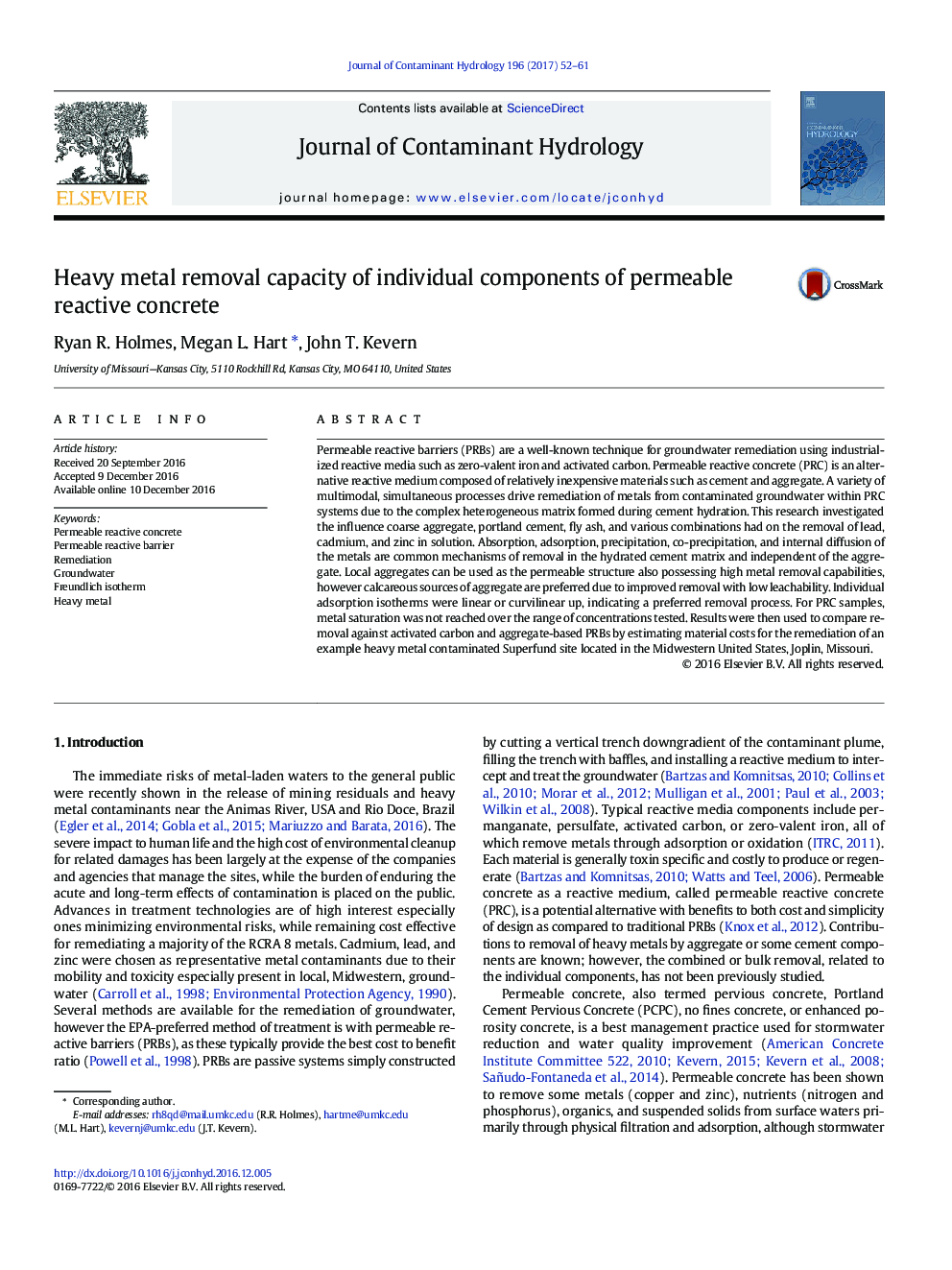| کد مقاله | کد نشریه | سال انتشار | مقاله انگلیسی | نسخه تمام متن |
|---|---|---|---|---|
| 5765917 | 1627015 | 2017 | 10 صفحه PDF | دانلود رایگان |
- Aggregate chemistry has a minor role in heavy metal removal.
- Cement plays a vital role in long term removal.
- Permeable reactive concrete (PRC) is an effective permeable reactive material.
- Componential influences have never before been investigated for PRCs.
- Removal is driven by adsorption, precipitation, ion exchange and diffusion.
Permeable reactive barriers (PRBs) are a well-known technique for groundwater remediation using industrialized reactive media such as zero-valent iron and activated carbon. Permeable reactive concrete (PRC) is an alternative reactive medium composed of relatively inexpensive materials such as cement and aggregate. A variety of multimodal, simultaneous processes drive remediation of metals from contaminated groundwater within PRC systems due to the complex heterogeneous matrix formed during cement hydration. This research investigated the influence coarse aggregate, portland cement, fly ash, and various combinations had on the removal of lead, cadmium, and zinc in solution. Absorption, adsorption, precipitation, co-precipitation, and internal diffusion of the metals are common mechanisms of removal in the hydrated cement matrix and independent of the aggregate. Local aggregates can be used as the permeable structure also possessing high metal removal capabilities, however calcareous sources of aggregate are preferred due to improved removal with low leachability. Individual adsorption isotherms were linear or curvilinear up, indicating a preferred removal process. For PRC samples, metal saturation was not reached over the range of concentrations tested. Results were then used to compare removal against activated carbon and aggregate-based PRBs by estimating material costs for the remediation of an example heavy metal contaminated Superfund site located in the Midwestern United States, Joplin, Missouri.
Journal: Journal of Contaminant Hydrology - Volume 196, January 2017, Pages 52-61
